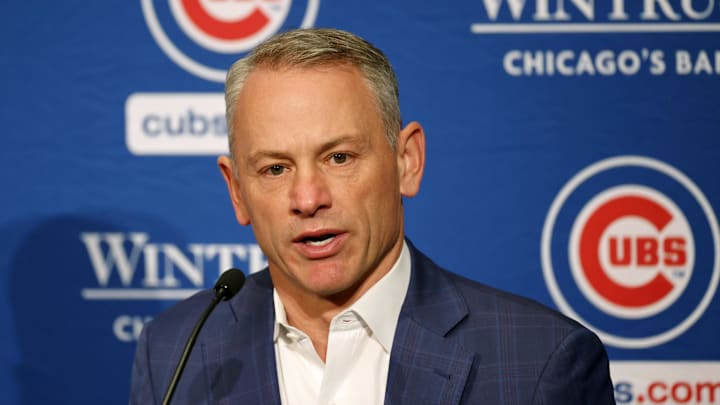With the trade deadline rapidly approaching, the Chicago Cubs made the decision that they had to make. Jed Hoyer said that barring a massive winning streak, the team was going to make deals that would help them in future years at the deadline.
This made a ton of sense, as the Cubs were under .500, were playing like one of the worst teams in the majors since April, and had slim odds of making it to the postseason.
For the most part, Hoyer lived up to what he said. The Isaac Paredes trade was shocking, but his club control makes it a play for the future. The Nate Pearson trade was the same kind of thing. Not trading likely free agents at the end of the year like Hector Neris and Drew Smyly was questionable, but again, Hoyer mostly played for 2025 with his moves.
That's why this stunning report from Jon Heyman of the NY Post saying that the Cubs were one of six teams to check in on Blake Snell makes absolutely no sense. When reading further into what Heyman said, it makes even less sense.
Jed Hoyer's trade deadline strategy makes no sense following shocking update
"The Yankees — one of at least six teams to check in, along with the Orioles, Dodgers, Padres, Cubs and Rangers — seemed worried about the $30M player option, but two rival GMs opined it would take a 'catastrophic' or 'debilitating' injury for Snell to exercise it now, anyway."
As Heyman notes, the Cubs were reportedly one of at least six teams to check in on Snell, the reigning NL Cy Young winner. This doesn't work for so many reasons.
First, let's take a look at Snell's contract. He signed a two-year deal to join the San Francisco Giants in the offseason, but the second year was a player option. Based on how well Snell was pitching (0.75 ERA in four starts after being activated off of the IL), it was assumed even then that the southpaw was going to opt out of his contract and become a free agent.
Knowing this, why would the Cubs want to acquire Snell if their plan was to focus on 2025 and beyond?
Second, Heyman said that these teams that checked in seemed worried about Snell picking up his player option. Reading that makes their interest even more strange. If the Cubs are focusing on the future, wouldn't they want Snell to be a part of it? If not, why did they reach out? They were only interested in Snell if he was a rental but are playing for 2025?
Third, why even call about Snell in the first place? If there's one strength that this Cubs team has, it's their rotation. They rank fifth in the majors with a 3.81 starting pitching ERA. Jameson Taillon, Shota Imanaga, Justin Steele, and Javier Assad are all locked in through the 2026 season.
If the Cubs were willing to make a major splash, shouldn't it have been for a bat or for a controllable reliever? Obviously, if they could get Snell at the right price that would've been fine, but judging by how much of a seller's market this turned out to be, that presumably wouldn't have happened.
Hoyer playing for 2025 and beyond was the right way to go considering their place in the standings. He went about that in a creative way with the trades he made and should be commended for that. This Snell interest, though, is weird, especially if they didn't want him in 2025.
(For more news and rumors, check out MLB Insider Robert Murray’s work on The Baseball Insiders podcast, and join the discord to get the inside scoop between now and the MLB offseason.)
